For most of last spring our orchard was primarily overrun with invasive grasses and thistles. Removing them early in the season might decrease the number of them that reappear each year, but rather than stare at bare dirt, our goal was to replace the weeds with plants that are not only more pleasant to look at, but also more beneficial for the native pollinators, and honey bees on the farm.
Last September we ordered a variety of native wildflower seeds to plant throughout our orchard. As we hand prep the orchard site due to the severity of the slope, weeding, digging, and raking is a time consuming process. Slow prep, and an early start to the rainy season last fall resulted in us not managing to plant all of the seed we had intended. We did get the Goldfields and Baby Blue Eyes sown though. Hopefully the remainder will still be viable enough to plant this fall.
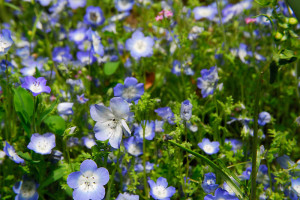
Baby Blue Eyes (Nemophila menziesii) and Goldfields (Lasthenia glabrata) are now blooming together in the orchard
To attack the entire orchard slope at once was simply overwhelming. Instead we prepared small areas across the slope to sow swaths of seed. Our hope is that some of the wildflowers will produce seed of their own and self sow for next year, and we’ll augment that with additional seed sowing later this fall in the areas we didn’t plant last year.
Overall, replacing the undesirable plants with desirable ones will be a gradual process, but we hope the slope will improve year over year decreasing the amount of weeding necessary each spring.
By purchasing individual seed in bulk, rather than buying a seed blend, we could select just those seed varieties we wanted, and focus on seed types most appropriate to this region. The other advantage of avoiding the wildflower-seed-mix-in-a-can, is that we could sow each type in individual swaths.
Bees, just like us, tend to have favorite foods. When a honey bee favors a particular bloom her foraging is significantly more efficient if she can travel between adjacent flowers of the same type, all planted together in an area, rather than have to travel significant distances between her favorite flowers. She’ll gather nectar and pollen much more quickly, and return to the hive with more provisions over a shorter span of time.

A pollinator that favors Lasthenia doesn't have to travel far to find the next bloom if the flowers are planted in drifts
Of course, over time seeds will move around.
Wind, rain, and woodland creatures will cause some blending of the bloom types over time, blurring the borders between drifts, but the majority of seed as these plants self sow will be concentrated near to where they’re set, hopefully helping to build a patchwork of blooms over time.
The greatest challenge this spring, while the plants get established, has been keeping weeds at bay. March was so wet we avoided disturbing the slope at all so as not to worsen some of the erosion on the slope, and in some areas the thugs out competed some of the smaller patches of wildflowers we’d sown.
Lessons learned this last year are that it’s almost impossible to sow the wildflower seed too thickly. Denser stands of wildflowers were much more effective at out competing the invaders. Areas that were sparsely sown, were overrun, especially by weedy grasses, and the crimson clover.
In an attempt to squash some of the more aggressive weeds on this slope, we had sown some crimson clover a few years ago as a cover crop. This is a non-native clover, which successfully competes with the grasses, but it also won’t let anything else grow. This meant we had to repeatedly weed it out of the wildflower patches this winter and spring. In hindsight we realize we never should have sown it, but we’re slowly eradicating the clover from the orchard slope in favor of the wildflowers. This spring we left a little to bloom for the bees, but we’ll cut the clover down in the coming week before it has a chance to set much seed, and turn under any green growth that reappears with the winter rains.
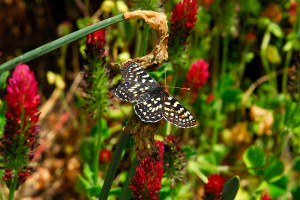
...the butterflies, like this Variable Checkerspot (Euphydryas chalcedona), don't mind the clover either
It’s a beautiful clover, but it doesn’t belong here, and we need to stop it from spreading to other parts of the property.
We also discovered this year that the upper slope area, due to the very sandy nature of our soils, tends to dry out alarmingly fast once the late winter rains give way to spring. Flowers on the lower slope haven’t needed any supplemental irrigation yet, but those at the top of the slope are needing more water to keep them looking their best. The vile voles this spring also took their toll on some of the plants…

Voles are evil, and destroyed this entire patch of Nemophila menziesii before it had a chance to set seed
In spite of the weeds, and the voles, a number of other native blooms are thriving in the orchard this spring, now that the deer have been kept at bay. The endemic trailing snowberries (Symphoricarpos mollis) are putting on a more impressive show this spring with their tiny blossoms.
The white globe lilies (Calochortus albus) are appearing in much larger numbers this spring, and just now heading into their peak bloom period.
Some of the transplants recently acquired are also thriving, including the Chia (Salvia columbariae)…
…and the Silver Bush Lupine (Lupinus albifrons).
The Blue Eyed Grass (Sisyrinchium bellum) planted last spring is just starting to rebloom.
Overall our first season of wildflower sowing has gone well, and it’s tremendously rewarding to walk out into the orchard now amidst a sea of blooms, and hear the low hum of thousands of contented honey bees and native bees as they buzz between the blossoms.
We’ll sow more varieties of wildflowers in the fall, and by next spring we hope to see a more impressive floral display, not to mention significantly fewer weeds!

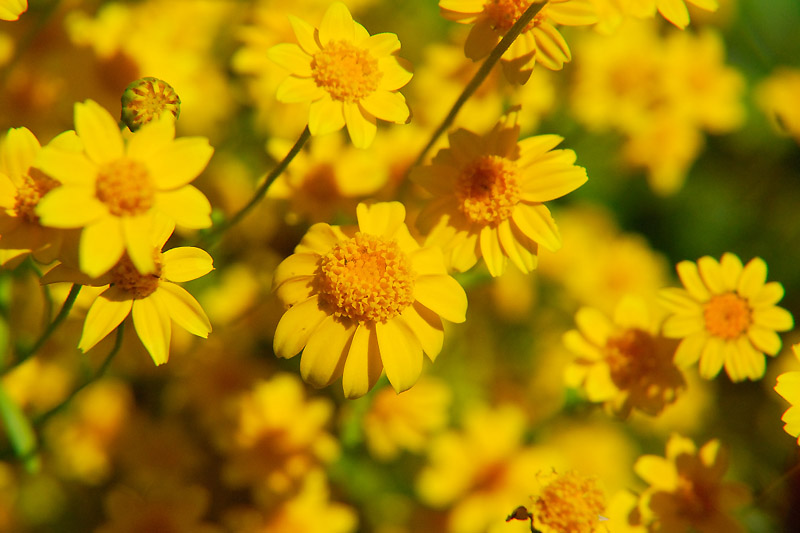
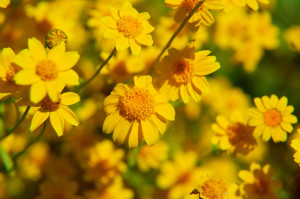
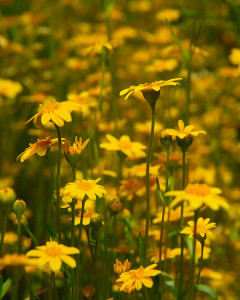

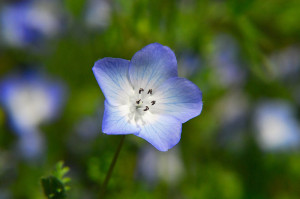
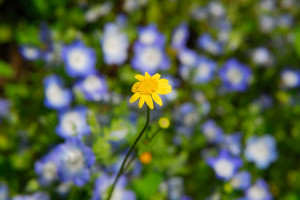
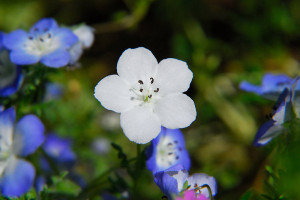


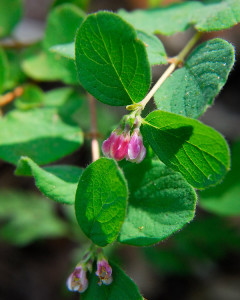

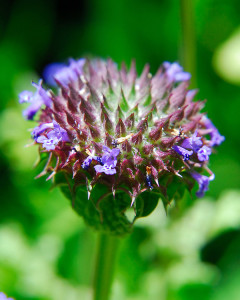
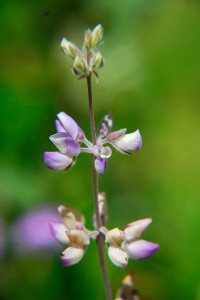
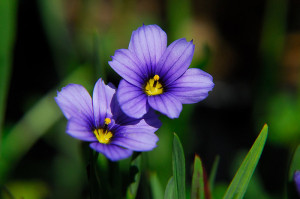








Beautiful! I’d love to have the space someday to plant a meadow full of wildflowers — your experiences will stick in my head, hopefully to be retrieved when needed.
The deer are being kept at bay with fencing I assume?
We installed a 7ft perimeter deer fence around the orchard and garden last year:
https://curbstonevalley.com/blog/?p=716
There were some rather frustrating moments where the deer managed to break through, jump over, and push under the fence, but after some tweaking we did manage to finally get the fence secure (knock on wood). So far it’s holding 😉
Looking good! I really need to get my snail population under control, because I can’t seem to start any plants from seed. They germinate, and then … CHOMP! Gone.
We often have trouble with direct sowing, but for us it’s mostly voles and gophers. I hate planting a swath of seed, and then the next morning a gopher has pushed up a giant mound of dirt right in the middle of my seed patch…Grrrr. They’re such critics. 😛
Grrr. Those vicious voles!
Enjoyed this post and the gorgeous shots of your meadow.
I agree they are vile creatures. I swear they take pleasure in destroying the garden. We definitely need more owls 😉
Interesting…I will have to remember to sow wildflowers thickly. You have thought things through so carefully…your bees must be the happiest bees on earth!
I thought I was being too generous with the seed in some areas, but those areas have done the best. Unfortunately, sowing seed that thick is also expensive, so I’m hoping that these plants will re-seed at least somewhat to help keep costs down.
Haven’t noticed much mole activity but I don’t know how to recognize it! so maybe I’m just blissfully ignorant. It’s encouraging to hear that the wildflowers if thick enough are dominating the weeds! I’m not so sure about sowing wildflowers as yet, because I’m not sure what might pop up here on their own. Certainly those meadow type flowers are not showing up as yet. If they fail to appear in a year or two at all, then i’ll probably bring in some “could be indigenous here” ones to pump up the presence of native species. The flowers are just beautiful – what a glorious orchard!
The moles we don’t mind, they’re usually eating the grubs in the soil anyway. It’s the VOLES that do all the damage. They eat entire small plants, and riddle the orchard with golf-ball sized holes. If we stand there staring at the ground some days, you see large grey-brown furry bullets shooting out of one hole, and straight into another. Very cowardly creatures, that don’t like to be out in the open, so it’s makes them difficult to catch!
It’s always tough trying to get seed sown varieties to naturalize. Sowing blocks of the same variety makes a lot of sense, and it sure is appealing to the human aesthetics as well. I just love how you’re trying to make it easier for the ‘working ladies’ to do their jobs!
Anything we can do to make the bees happy 😉 Sowing in blocks also helps to identify which species really don’t do well, or if one variety needs a little more water, it’s easier to manage without drowning the flowers that want the conditions to stay dry.
Good luck on this project. I would love to have a wildflower meadow, but not sure if I have the patience or determination to try to keep the grasses out. It will look absolutely gorgeous when it’s done, and your bees will be in bee heaven!
It already looks better, but it’s got a long way to go to meet the vision in my mind’s eye. I hope it looks spectacular some day…if the voles don’t undo all our hard work first! 😛
It is so nice of you to plant for your bees. You are right about sowing thickly. The grasses are quick to out maneuver the wildflowers.
Beautiful pictures! I know what you mean about sowing lots of seeds. Last year I grew Hayfield Tarweed (Hemizonia congesta). It was SO beautiful and lasted from July into the fall. There were tons of seeds, which I left to fall for this year, but the birds got them all! Same with the Tidy Tips.
Sometimes reading your blog makes me tired thinking of all the work you do. How do you find time for it all? But then the beautiful photos and all you have accomplished always perk me up!!!
Oh, I can imagine how wonderful it already looks coming upon it, and years from now it will be spectacular. I do imagine that some of the wildflowers will like it better and eventually take over the others, if left to their devices. At least that’s been my experience.
I quite like the wild meadow look myself. Good luck with your project. Will be following your blog to see how you are doing.
Goldfields! Those are the unidentified little yellow flowers I have. Your orchard must look amazing in person.
I love your wildflowers…and you are right creating and seeding a meadow is hard work…I still have to see mine and work on weeds in our bad clay soil…and the voles are just awful creatures…your work has paid off and the slope is lovely
What a wonderful idea! I wish I had a field (or 10) to do this to. I completely understand about too-big projects… this spring has been a doozie! I bet your seeds will still be viable this fall.
Clare, I really admire the way you’ve been approaching this project. Your California native flowers are lovely.